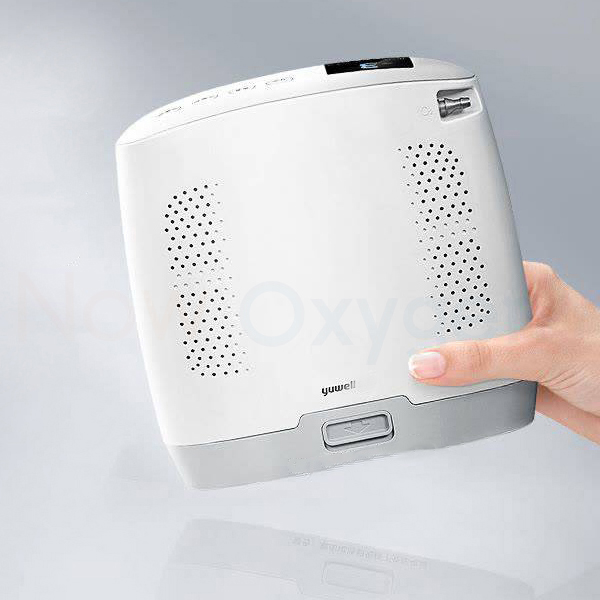The Growing Need for Portable Oxygen Solutions
As the global population continues to age, healthcare needs are evolving rapidly. One of the most important aspects of senior care in 2025 is respiratory health. Many older adults are dealing with conditions like chronic obstructive pulmonary disease (COPD), emphysema, asthma, or simply reduced lung capacity due to age. Traditionally, oxygen therapy was tied to bulky home-based systems that limited movement. However, with modern technology, a new solution has emerged—the 手提氧氣機, or portable oxygen concentrator. Seniors are increasingly switching to these compact, smart, and efficient devices to improve their quality of life while maintaining independence.
Understanding What a 手提氧氣機 Is
A 手提氧氣機 is a lightweight and mobile oxygen concentrator designed to provide a continuous or pulsed supply of oxygen to the user, wherever they go. Unlike traditional oxygen tanks that store a finite amount of compressed oxygen, the 手提氧氣機 works by drawing in air from the environment, filtering nitrogen, and delivering purified oxygen to the user. This means it doesn’t need constant refilling, making it far more convenient and cost-effective over time. Modern versions are battery-powered, compact enough to carry in a shoulder bag, and designed for quiet operation, making them ideal for everyday use both at home and outside.
Why Seniors Prefer Portability and Independence
One of the biggest reasons seniors are turning to 手提氧氣機 in 2025 is the desire for independence. In the past, those requiring oxygen therapy often felt confined to their homes, dependent on caregivers or heavy stationary systems. The mobility provided by portable oxygen concentrators allows seniors to regain their freedom. They can travel, shop, visit friends, or even enjoy vacations without worrying about running out of oxygen. The psychological impact of this freedom is immense—many report feeling more confident, socially active, and emotionally healthier once they start using a 手提氧氣機.
Advances in Technology Driving the Change
Over the past few years, technological innovations have made 手提氧氣機 more reliable, efficient, and affordable. Newer models feature advanced sensors that automatically adjust oxygen flow according to the user’s breathing rate. This means oxygen is delivered more efficiently, conserving battery power and ensuring optimal therapy. Many 2025 models also include Bluetooth connectivity, allowing seniors or caregivers to monitor oxygen usage and battery life through a smartphone app. The integration of AI-driven systems helps predict maintenance needs or alert users when filters require cleaning. These intelligent features have made the 手提氧氣機 not just a medical device but a smart health companion.
Improved Battery Life and Lightweight Designs
Another major reason for the growing popularity of 手提氧氣機 is the improvement in battery performance. Modern lithium-ion batteries can last up to 10 hours on a single charge, allowing users to move freely throughout the day without constant recharging. Some models also come with car chargers or replaceable battery packs for long journeys. Additionally, the devices have become significantly lighter—some weighing less than 2 kilograms—making them easy for seniors to carry without fatigue. The ergonomic designs and comfortable straps ensure usability without strain. This level of convenience was unimaginable just a decade ago.
Health Benefits of Consistent Oxygen Therapy
Using a 手提氧氣機 offers a wide range of health benefits for seniors. Consistent oxygen therapy improves blood oxygen levels, supporting better brain function, heart health, and energy levels. Seniors who use portable oxygen concentrators often experience reduced fatigue, improved sleep quality, and better mood regulation. For those with chronic lung diseases, maintaining oxygen saturation helps prevent flare-ups and hospitalizations. Because a 手提氧氣機 allows therapy to continue during outdoor activities or travel, users maintain a more active lifestyle, which in turn supports cardiovascular and mental health. In essence, it promotes both physical vitality and emotional well-being.
Economic and Practical Advantages
From a financial perspective, switching to a 手提氧氣機 makes sense for many seniors. Traditional oxygen tanks require frequent refilling and delivery services, which can become costly over time. Portable oxygen concentrators, on the other hand, generate oxygen continuously from the air, eliminating the need for tank refills. The maintenance costs are minimal—mostly limited to periodic filter replacements and battery checks. Moreover, government and insurance programs in many regions now support or subsidize the purchase of portable concentrators, recognizing their long-term cost efficiency and health benefits.
Social and Psychological Impact
Social isolation is a major concern among the elderly, especially those dealing with health challenges. A stationary oxygen setup can make seniors feel confined and dependent, reducing their social interactions. The introduction of 手提氧氣機 has changed this dynamic. Seniors can now attend family gatherings, community events, and outdoor walks without feeling burdened by medical equipment. The portability restores a sense of normalcy, allowing them to live more spontaneous and fulfilling lives. Many users also report improved self-esteem and reduced anxiety since they can participate in social activities without embarrassment or limitations.
Environmental and Safety Improvements
Older oxygen systems often relied on heavy metal cylinders and complex logistics for refills, contributing to environmental waste and safety concerns. In contrast, the 手提氧氣機 is a more sustainable option. It doesn’t require pressurized oxygen storage, reducing the risk of leaks or explosions. The built-in safety features—like overheat protection, automatic shutoff, and flow sensors—make them safer for daily use, even without constant supervision. For seniors living alone, these safety upgrades offer valuable peace of mind.
The Role of Healthcare Providers
Healthcare professionals are increasingly recommending 手提氧氣機 to elderly patients who need oxygen therapy. Doctors recognize that mobility and mental health are as crucial as physical treatment. Many hospitals and clinics now include portable oxygen concentrator assessments as part of respiratory care programs. With telemedicine becoming more common in 2025, doctors can remotely monitor oxygen levels through connected devices, providing real-time guidance and adjusting therapy settings as needed. This integration of medical supervision and technology ensures both safety and effectiveness for the user.
The Future Outlook of Portable Oxygen Technology
As we look ahead, the trend of seniors adopting 手提氧氣機 is expected to continue growing. Manufacturers are already developing next-generation devices that are even smaller, quieter, and more energy-efficient. Some prototypes include wearable concentrators that can be attached to clothing or worn as a belt, providing oxygen discreetly. AI integration may soon allow predictive health monitoring, detecting respiratory issues before symptoms worsen. With healthcare shifting toward home-based and preventive care, the 手提氧氣機 will remain at the center of innovation in respiratory therapy.
Conclusion
In 2025, the shift toward using 手提氧氣機 among seniors represents more than a technological change—it symbolizes freedom, dignity, and improved quality of life. This device empowers older adults to stay active, maintain independence, and enjoy everyday activities without compromise. With its combination of advanced features, medical efficiency, and user-friendly design, the portable oxygen concentrator has transformed from a luxury item into an essential healthcare tool. As innovation continues, the future of senior respiratory care will be shaped by devices like the 手提氧氣機, helping millions breathe easier, live longer, and stay connected to the world around them.




